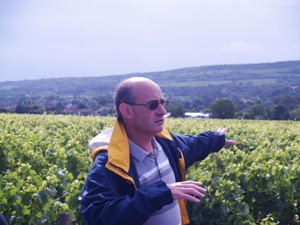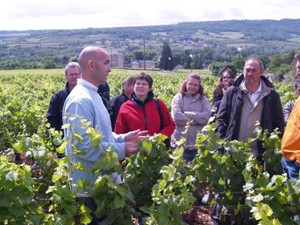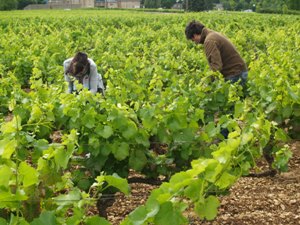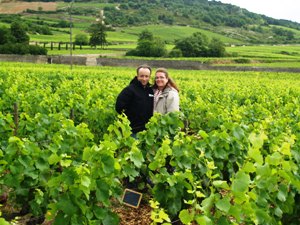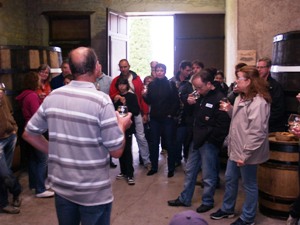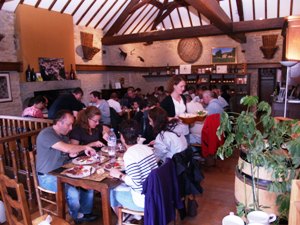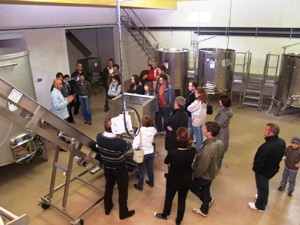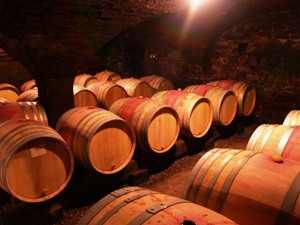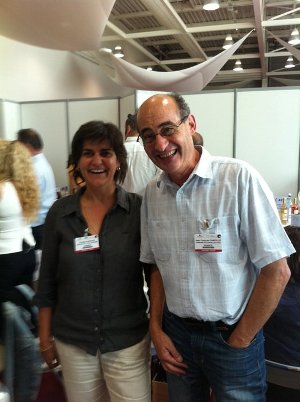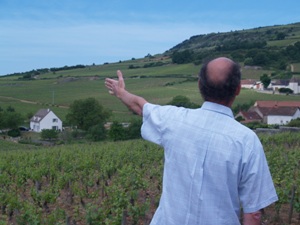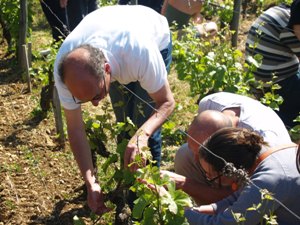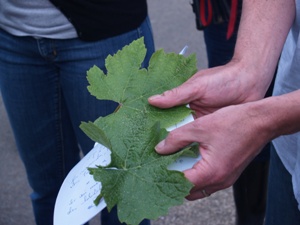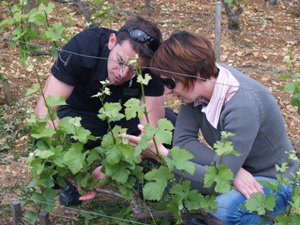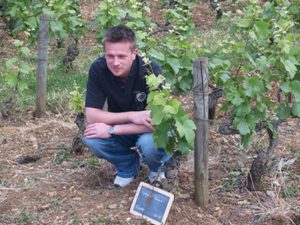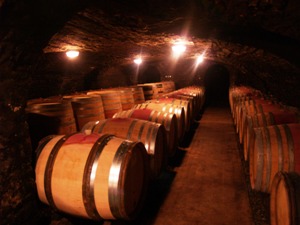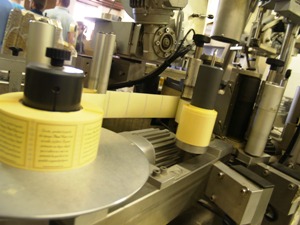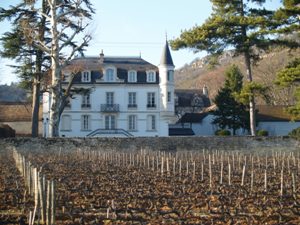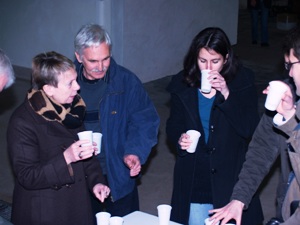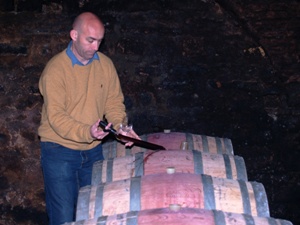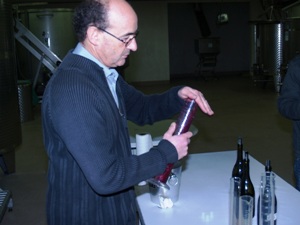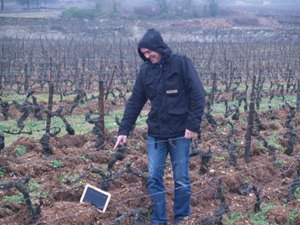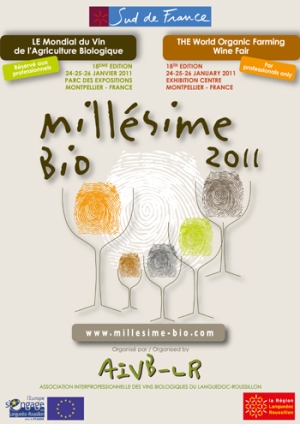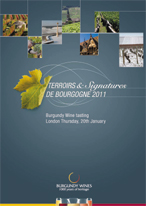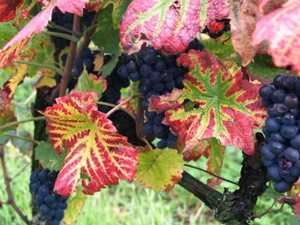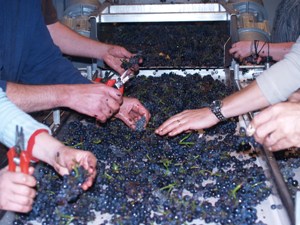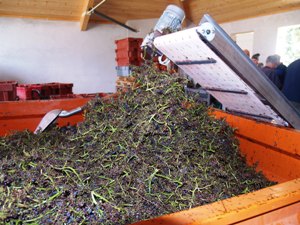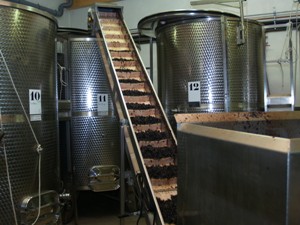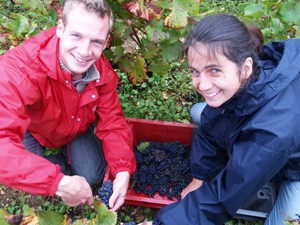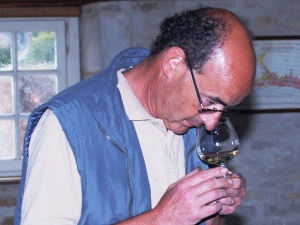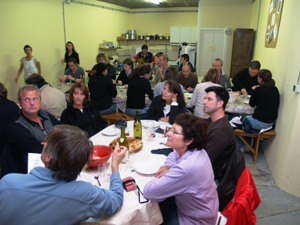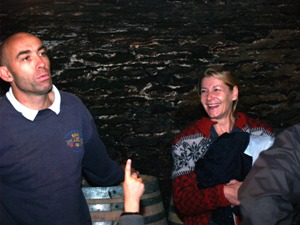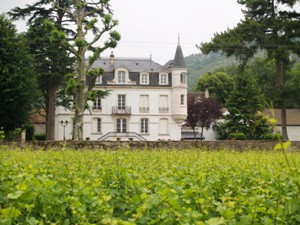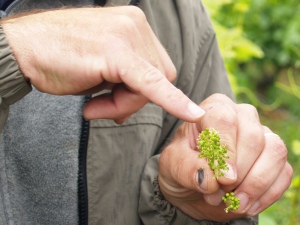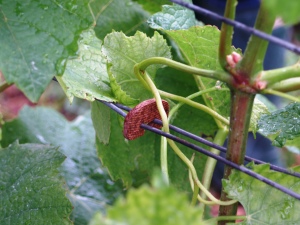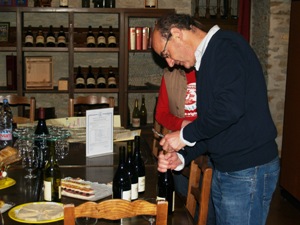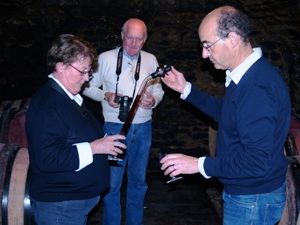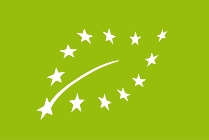We had to be flexible last Saturday with the Wine Discovery Experience Day at Domaine Chapelle to avoid a few showers, but that didn't stop us having a good time all the same!
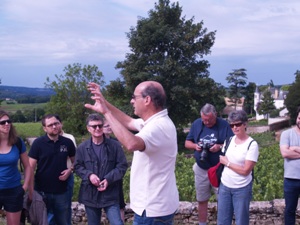
We started off with a little stroll through the vines. Jean-François Chapelle explained what makes the Burgundy terroir so special, and showed us the geological differences between the vineyards that make up Santenay village, Santenay Premier Cru and the plots used for the Burgundy Pinot Noir.
We climbed up to one of Domaine Chapelle's Premier Cru vineyards, Beaurepaire. Some of the old vines in this vineyard have recently been dug up, so Jean-François explained how his team removed the vines and roots, and how the plot will be sowed with mustard to regenerate the soil before the new vines are planted.
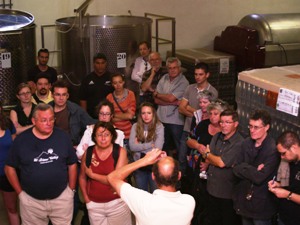
The first rain shower arrived a little earlier than expected, so we scurried back to the shelter of the winery to continue our discussions on the work carried out in the vineyard, and we also visited the fermentation hall where the grapes are received at harvest time and put into the fermentation tanks.
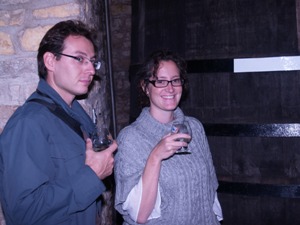
Next up was a wine tasting of some of the white Burgundy wines from Domaine Chapelle, a Santenay "Saint Jean" 2009 and a Chassgane Montrachet Premier Cru "Les Morgeots" 2009. The wine tasting continued over our lunch of Burgundy specialties. First, a Santenay "Clos des Cornières" 2006, the wine chosen for the Gourmet Odyssey Wine Experience, then an Aloxe Corton 2007, with a Santenay Premier Cru "Beaurepaire" 2002 to finish.
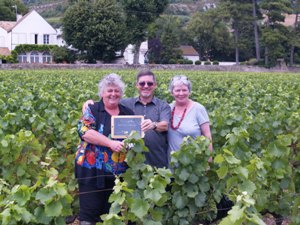
After the meal, we had a new bright patch, so we headed back amongst the vines, this time to the Clos des Cornières vineyard so that everyone could get acquainted with their adopted vines!
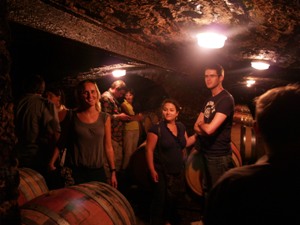
Back at the winery, we descended through the low door to the vaulted cellar which is a real labyrinth. Here we saw where the ageing takes place in the oak barrels, and where hundreds of thousands of bottles of wine are stored!
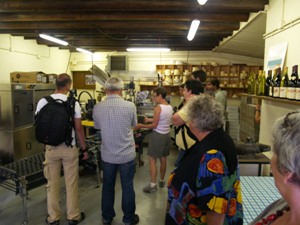
The Wine Experience Day finished with a visit to the labeling room, where one day next year the bottles of the 2011 vintage will be dressed with the personalised wine labels of the clients of the Gourmet Odyssey Wine Experience. But there's still lots of work to be done before then - you have to be patient in the world of wine!



